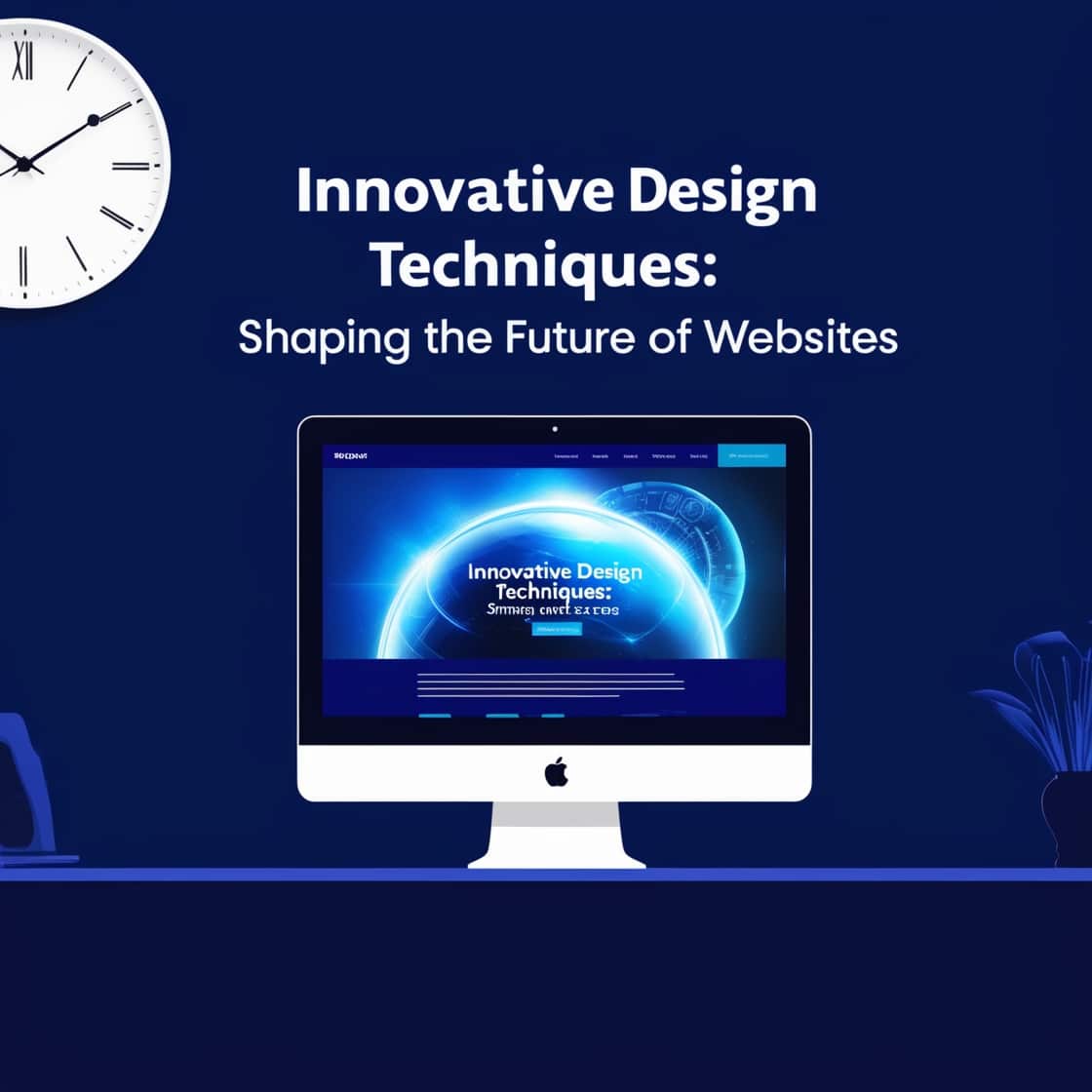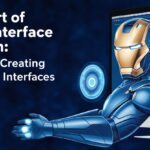Innovative design techniques are constantly shaping the future of websites. As technology continues to evolve, so does the way we design and interact with websites. In today’s digital age, websites are often the first point of contact between businesses and their customers. Therefore, it is essential that websites are designed in a way that is visually appealing, user-friendly, and engaging.
Innovative design techniques are being used to create websites that are not only aesthetically pleasing but also highly functional. For example, responsive design techniques are being used to create websites that can adapt to different screen sizes and devices. This means that users can access the same website on a desktop computer, tablet, or mobile phone and still have a seamless experience. Additionally, designers are using animation and interactive elements to make websites more engaging and interactive. This can help to keep users on the site for longer periods of time and increase the chances of them taking a desired action, such as making a purchase or filling out a contact form.
Overall, innovative design techniques are playing a crucial role in shaping the future of websites. As technology continues to evolve, it will be interesting to see how designers continue to push the boundaries of what is possible and create websites that are not only visually stunning but also highly functional and user-friendly.
The Impact of Technology on Web Design
Web design has come a long way since the early days of the internet. With the advancement of technology, web designers are now able to create websites that are more engaging, interactive, and user-friendly. In this section, we will explore the impact of technology on web design and how it is shaping the future of websites.
Artificial Intelligence
Artificial Intelligence (AI) has become an integral part of web design. AI-powered tools and software are used to create personalised experiences for users. For example, chatbots are used to provide instant customer support, while machine learning algorithms are used to analyse user behaviour and provide personalised recommendations. AI is also used to automate repetitive tasks, such as image optimisation and content creation.
Augmented and Virtual Reality
Augmented Reality (AR) and Virtual Reality (VR) are transforming the way users interact with websites. AR overlays digital content onto the real world, while VR creates immersive experiences that transport users to a virtual world. These technologies are being used to create interactive product demos, virtual showrooms, and immersive storytelling experiences.
Voice User Interfaces
Voice User Interfaces (VUIs) are becoming increasingly popular, thanks to the rise of smart speakers and virtual assistants. VUIs allow users to interact with websites using voice commands, making it easier to access information and complete tasks. Web designers are now incorporating VUIs into their designs to create more intuitive and user-friendly interfaces.
Blockchain
Blockchain technology is being used to create more secure and transparent websites. It allows users to verify the authenticity of content and transactions, making it easier to build trust with users. Blockchain is also being used to create decentralised marketplaces and social networks, which give users more control over their data and privacy.
In conclusion, technology is having a significant impact on web design, and it is shaping the future of websites. AI, AR, VR, VUIs, and blockchain are just a few of the technologies that are being used to create more engaging, interactive, and user-friendly websites. As technology continues to advance, we can expect to see even more innovative design techniques that will transform the web design industry.
The Evolution of Design Elements
Website design has come a long way since the early days of the internet. The evolution of design elements has been a key factor in shaping the future of websites. In this section, we will explore some of the most innovative design techniques that have emerged in recent years.
Minimalism
Minimalism is a design technique that has gained popularity in recent years. It is characterised by the use of simple, clean lines and a focus on negative space. Minimalist designs are often used to create a sense of elegance and sophistication. They are also popular because they load quickly and are easy to navigate.
Bold Typography
Bold typography is another design trend that has emerged in recent years. It involves the use of large, bold fonts to create a strong visual impact. Bold typography is often used to draw attention to key messages or calls to action. It is also popular because it is easy to read on mobile devices.
Dark Mode
Dark mode is a design trend that has become increasingly popular in recent years. It involves using a dark colour scheme for the background of a website, rather than the traditional white background. Dark mode is popular because it is easier on the eyes in low light conditions. It also creates a sense of sophistication and elegance.
3D Elements
3D elements are a design technique that has become increasingly popular in recent years. They involve using three-dimensional objects to create a sense of depth and realism. 3D elements are often used to create interactive experiences that engage users and encourage them to explore a website.
Neo-Brutalism
Neo-Brutalism is a design trend that has emerged in recent years. It involves the use of raw, unpolished materials and a focus on functionality over aesthetics. Neo-Brutalist designs are often used to create a sense of authenticity and honesty. They are also popular because they load quickly and are easy to navigate.
In summary, the evolution of design elements has played a significant role in shaping the future of websites. From minimalist designs to bold typography, dark mode, 3D elements, and neo-brutalism, designers have a wide range of innovative techniques at their disposal to create engaging and effective websites.
The Importance of User Experience
User experience (UX) is a critical aspect of website design. It is the overall experience that a user has while interacting with a website, including how easy it is to navigate, how visually appealing it is, and how well it meets the user’s needs. A positive UX can lead to increased engagement and conversions, while a negative UX can drive users away.
Micro-Interactions
Micro-interactions are small, focused interactions that occur within a website. They are designed to provide feedback to the user, such as when a button is clicked or a form is submitted. These interactions can be used to enhance the user experience by making the website feel more responsive and engaging.
Inclusive Design
Inclusive design is the practice of designing websites that are accessible to all users, regardless of their abilities. This includes designing for users with disabilities, such as visual impairments or hearing loss, as well as users who may be using assistive technologies.
Mobile-First Approach
With more and more users accessing websites on mobile devices, it is essential to design websites with a mobile-first approach. This means designing for the smallest screen size first and then scaling up for larger screens. This approach ensures that the website is optimised for mobile users, who may be using slower internet connections or smaller screens.
Data Visualisation
Data visualisation is the practice of presenting data in a visual format, such as charts or graphs. This can help users to understand complex data more easily and quickly. It can also make the website feel more engaging and interactive.
Consistency and Efficiency
Consistency and efficiency are essential aspects of website design. Consistency ensures that the website is easy to navigate and that users can find what they are looking for quickly. Efficiency ensures that the website loads quickly and that users can complete tasks with minimal effort.
In conclusion, the importance of user experience cannot be overstated when it comes to website design. By focusing on micro-interactions, inclusive design, a mobile-first approach, data visualisation, consistency, and efficiency, designers can create websites that are engaging, accessible, and easy to use.
The Power of Immersive Experiences
Immersive experiences are transforming the way people interact with websites. They allow users to engage with content in a more meaningful and memorable way, leading to increased user engagement and loyalty. In this section, we will explore the different immersive technologies, storytelling, interactive content, and personalised content that are shaping the future of websites.
Immersive Technologies
Immersive technologies, such as virtual reality (VR) and augmented reality (AR), are becoming more accessible and affordable, making it easier for businesses to incorporate them into their websites. VR and AR allow users to experience a website in a more interactive and engaging way, creating a sense of presence and immersion that traditional websites cannot match.
Storytelling
Storytelling is an effective way of engaging users and creating an emotional connection between the user and the website. By using immersive technologies and interactive content, websites can tell stories in a more engaging and memorable way. This can be achieved through the use of videos, animations, and interactive graphics.
Interactive Content
Interactive content is an effective way of engaging users and encouraging them to spend more time on a website. Interactive content includes quizzes, polls, and games, which allow users to interact with the website and each other. This type of content can be used to educate users, entertain them, or encourage them to take action.
Personalised Content
Personalised content is content that is tailored to the individual user. This can be achieved through the use of cookies, user data, and machine learning algorithms. Personalised content can be used to create a more engaging and relevant experience for the user, leading to increased user engagement and loyalty.
In conclusion, immersive experiences are transforming the way people interact with websites. By using immersive technologies, storytelling, interactive content, and personalised content, websites can create a more engaging and memorable experience for users. This can lead to increased user engagement and loyalty, which can ultimately lead to increased revenue and growth for businesses.
The Future of Web Design
The world of web design is constantly evolving, and new innovations are shaping the way websites are created and used. In this section, we will explore some of the key trends that are shaping the future of web design, including the metaverse, sustainability, security and functionality, and learning and collaboration.
The Metaverse
The metaverse is a term used to describe a virtual world where people can interact with each other and digital objects in real-time. It is a concept that has been around for many years, but recent advancements in technology have made it more accessible than ever before.
As the metaverse continues to grow, web designers will need to adapt their designs to suit this new environment. Websites will need to be more immersive and interactive, allowing users to engage with digital objects in a more natural way.
Sustainability
As the world becomes more aware of the impact of climate change, sustainability is becoming an increasingly important consideration for web designers. Websites will need to be designed with energy efficiency in mind, using technologies such as green hosting and optimized code to reduce their carbon footprint.
In addition, web designers will need to consider the environmental impact of the materials used in their designs. This may include using sustainable materials such as bamboo or recycled plastic.
Security and Functionality
As the internet becomes more integrated into our daily lives, security and functionality are becoming increasingly important considerations for web designers. Websites will need to be designed with security in mind, using technologies such as SSL encryption and two-factor authentication to protect user data.
In addition, websites will need to be functional and easy to use, with intuitive navigation and clear calls to action. This will help to ensure that users can find the information they need quickly and easily.
Learning and Collaboration
As the world becomes more connected, learning and collaboration are becoming increasingly important considerations for web designers. Websites will need to be designed with these concepts in mind, using technologies such as interactive tutorials and collaborative workspaces to facilitate learning and collaboration.
In addition, web designers will need to consider the needs of different user groups, including those with disabilities or limited access to technology. This may include designing websites that are accessible to screen readers or using responsive design to ensure that websites are usable on a range of devices.
Overall, the future of web design is exciting and full of possibilities. By embracing new technologies and trends, web designers can create websites that are both functional and beautiful, while also contributing to a more sustainable and connected world.
Conclusion
Innovative design techniques are shaping the future of websites, and the possibilities are endless. With the advent of new technologies, web designers are constantly exploring new ways to create engaging and interactive websites that provide an exceptional user experience.
One of the most significant trends in website design is the use of responsive design. This technique allows websites to adapt to different devices, such as smartphones, tablets, and desktops, providing a seamless experience for users. In addition, designers are using typography, colour, and imagery to create unique and memorable website experiences.
Another trend is the use of animation and video. Websites are becoming more dynamic, with designers using animation and video to tell stories and engage users. This technique is particularly effective in e-commerce websites, where product videos can showcase the features and benefits of a product.
Designers are also exploring the use of artificial intelligence (AI) and machine learning to create websites that are more personalised and intuitive. AI can analyse user behaviour and preferences to provide a customised experience, while machine learning can help websites learn from user interactions to improve over time.
Overall, innovative design techniques are shaping the future of websites, and the possibilities are endless. As technology continues to evolve, web designers will continue to push the boundaries of what is possible, creating websites that are engaging, interactive, and tailored to the needs of their users.







